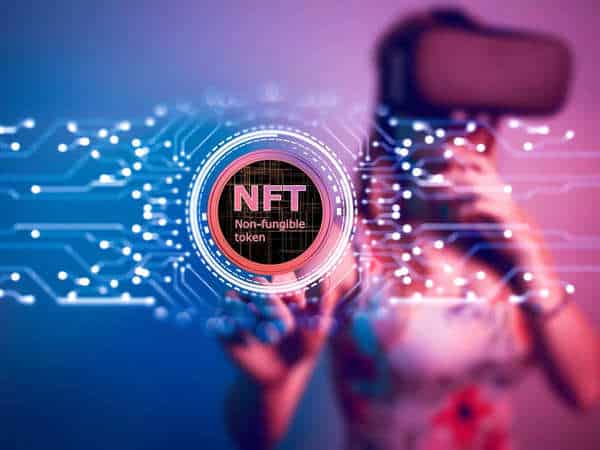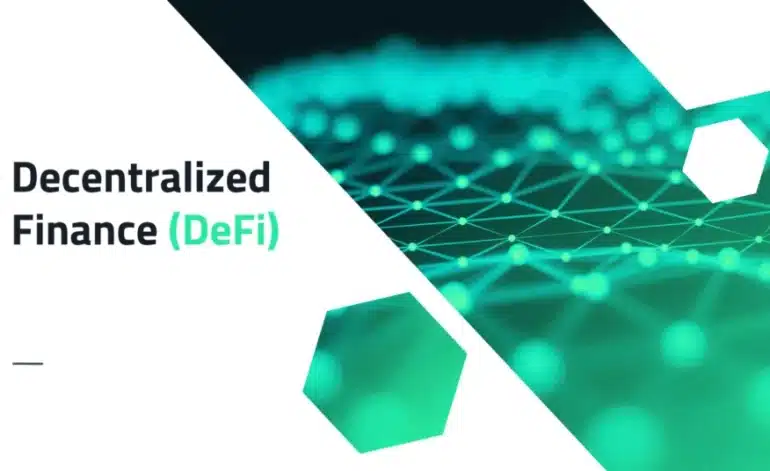You will learn all you need to know about NFT staking in this post, including how it works, its advantages and disadvantages, and how to earn income from it.
Everybody knows how to earn a return on their cryptocurrency investment by staking it. These days, you can earn money by staking your nonfungible tokens! Non Fungible Tokens (NFTs) can be staked on NFT staking platforms to increase their returns. NFTs have become more attractive as a result of this advancement.
By staking your non-fungible tokens (NFTs) in a smart contract, you will be able to make money off of them. The way you stake a bitcoin in a staking pool is similar to how you stake one in a bitcoin pool. Staking NFTs differs from other types of staking because you stake unique digital assets as part of your investment in a blockchain network.
What are NFTs?
Non-fungible tokens (NFTs) are exclusive cryptographic tokens that are only available on blockchains and cannot be copied. The NFT can be used to represent real-world objects like artwork and real estate. These physical assets may be “tokenized,” which improves the efficiency of trade while lowering the risk of fraud.
However, NFTs are made to grant you ownership of the work, which cannot be replicated (though the artist may retain the right to reproduce and copy the work). In terms of purchasing tangible works of art, anyone may purchase a Monet print. But the original can only be owned by one individual.
Why Invest In NFTs?
Because NFTs were a digital representation of rare items, they provided opportunities for both collectors and artists to earn a living by selling, purchasing, or even trading for gains similar to cryptocurrency investment. Fewer maintenance fees and more asset security are two additional benefits of NFTs as virtual currencies.
You might want to think about staking non-fungible coins for a few different reasons. First off, you are assisting the blockchain initiative that the NFT is linked to by doing so. This can support ensuring the project’s long-term success. Staking NFTS can also be a fantastic technique to generate passive income. The rate of investment you receive on your investment will rise along with the worth of the non-fungible token.
What is staking on NFTs?
Put your special token to use on the blockchain by staking your NFTs. NFTs can be any form of thing, from visual art to video files to gaming items, but they are frequently connected to digital photographs, like the Bored Ape Yacht Club collection.
You stake your nonfungible tokens by joining them in a network or protocol. You earn staking rewards for doing this activity. You may increase your income in this way while still maintaining ownership of the NFT.
Decentralized finance yield farming is similar to this type of stake, where bitcoins are lent to liquidity providers and rewarded via their interest or transaction fees.
What is the process of NFT staking?
In the same manner as staking cryptocurrencies, stake NFTs function as tokenized assets. Additionally, not all non-fungible tokens for NFTs can be staked, just as not all tokens can be staked. Since NFTs are tokenized assets, you may utilize NFT staking platforms to distribute them and secure them. A smart contract on the relevant blockchain technology makes this feasible.
Even though the idea of stacking NFTs is still relatively new, many NFT holders are quite enthusiastic about this advancement. It is because nonfungible tokens’ holders are reluctant to sell them due to their uniqueness. This is a key distinction between traditional currencies and cryptocurrencies, which are simple to purchase and trade. You need a cryptocurrency wallet that is compatible with the NFT to stake NFTs.
The first thing you will need to do is to check if your preferred wallet is compatible with the blockchain where the NFT is located. To transmit your NFTs to the staking platform, you must next link your wallet to it. This process is comparable to staking your money. Going to the platform’s staking area will allow you to carry out both.
NFT Staking Benefits
There are a variety of staking payouts available to holders of NFTs depending on the platform and the type of NFT. Stake systems with NFTs typically provide periodic incentives, which are distributed every day or every week.
The utility token of the platform is frequently used to pay out these prizes, although there are certain exceptions. You can exchange the staking reward tokens and perhaps convert them into other cryptocurrencies or fiat money, regardless of the token used for staking rewards.
There are additional staking systems with independent decentralized groups (DAOs). Here, NFT owners may secure their funds in a DAO pool, sometimes referred to as an NFT staking pool, enabling them to take part in platform governance duties.
Platforms for NFT staking
The top blockchains that allow NFT staking are shown below. You may be familiar with them or have even engaged in any of those games.
Onessus
A decentralized gaming platform called Onessus utilizes NFT development. The hold, one of its primary games, involves the neighbourhood competing for a portion of the renowned Immortal Gear sets. When Staking, a distinct solution from Onessus is intended specifically for NFT staking. NFTs earned from Onessus games can be saved here to obtain VOID tokens, the local currency.
Kira
The Kira network, which is based on the Web3 Foundation, links Dapps and offers platform compatibility. Holders of $KEX tokens may wager their tokens to get Kira’s native NFTs, and anybody may stake any type of NFT to obtain $KEX. Your NFT may be divided up into smaller pieces by Kira, who can tokenize each piece as a separate NFT. Discuss value-maximizing min-maxing.
Splinterlands
We believe that additional NFT staking possibilities would increase interest in this crypto trading card game. Each card you acquire throughout the game is an NFT, and you may deposit everything you have in a library so that other participants can borrow and use them. It resembles a volatility pool where you may passively earn transaction fees.
This game is powered by the Hive blockchain, which also supports over 120 additional games.
Polychain Monster
The digital collectable and game environment Polychain Monsters is cross-chain. This is a framework for dynamic cross-chain NFTs with a variety of characteristics and scarcity levels. These NFTs, commonly known as Polymons, are available in digital booster packs. These NFTs’ owners have the opportunity to stake them in exchange for weekly incentives in the form of PMON, Polychain Monsters’ cryptocurrency.
What Dangers Exist When Staking NFTs?
There are dangers connected with any investment, as there always are. If you sell NFTS at the incorrect moment, you can lose money since the value of the stock might move up or down. Additionally, your NFT can lose all of its value if the blockchain project fails. Do your homework and understand the hazards associated before dealing with non-fungible tokens.
The NFT market is very new. It is also extremely dangerous, similar to cryptocurrencies. However, there might not always be a market of purchasers for your NFT, unlike for bitcoin and other well-known cryptocurrency tokens.
Investment Risk with NFTs
- Making a Fortune Is Hard.
- Unstable in ownership.
- Bad for the environment.
- Unrecognized by federal laws.
- A highly volatile and illiquid asset.
- Spammable and environmentally unfriendly.
- It is not a technology that will make you rich overnight.
Conclusion
Investing in NFTs and staking them is a terrific alternative to holding them and hoping that their value will rise. One of the better applications for NFTs with high returns is this one. Although the NFT staking idea is still in its infancy, it is now receiving a lot of attention. Select the top NFT staking platform, then begin staking an NFT right now to start earning rewards.
Owning an unbeaten collection of pixels is nicely complemented by NFT staking. However, one thing it must do is identify and serve its audience. What will gain by locking up their priceless and unique tokens is currently difficult to determine.
Since the profits on their assets might be so inadequate that liquidating them would be more advantageous, smaller NFT owners don’t necessarily have a greater motivation to stake them. Without sufficient incentives, the entire concept is likely to stay unrealized.
***





